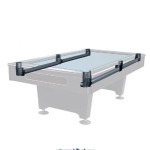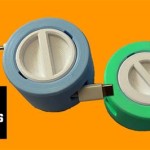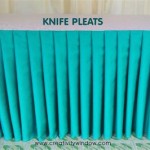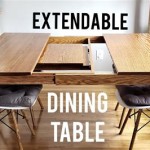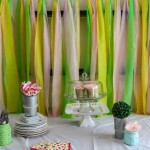Bar Tables and Stools: A Comprehensive Guide
Bar tables and stools represent a versatile and stylish addition to a variety of spaces, ranging from residential kitchens and dining areas to commercial bars, restaurants, and offices. Their elevated height and compact footprint offer a unique blend of functionality and aesthetics, making them a popular choice for both casual dining and social gatherings. This article provides a detailed exploration of bar tables and stools, covering their various types, design considerations, material options, ergonomic factors, and selection criteria.
The core appeal of bar tables and stools lies in their ability to create an informal and interactive atmosphere. The elevated height encourages conversation and eye contact, fostering a more engaging social experience. Furthermore, the space-saving design of bar tables and stools makes them ideal for smaller apartments, studios, or areas where traditional dining furniture would be too cumbersome. Their adaptability extends beyond residential settings, proving equally valuable in commercial establishments where maximizing seating capacity and creating a vibrant ambiance are paramount.
Types of Bar Tables
Bar tables are available in a diverse range of styles and configurations, each catering to specific needs and aesthetic preferences. Understanding the different types of bar tables is crucial for selecting the most appropriate option for a given space.
Fixed Height Bar Tables: These are the most common type of bar table, featuring a stationary height that typically ranges from 40 to 42 inches. Fixed height bar tables offer stability and durability, making them suitable for high-traffic areas. They are often constructed from solid wood, metal, or a combination of materials. The simplicity of their design allows them to seamlessly integrate into a variety of interior styles.
Adjustable Height Bar Tables: Offering greater flexibility, adjustable height bar tables allow users to customize the table height to accommodate different seating preferences or activities. These tables typically feature a pneumatic or hydraulic lift mechanism that allows for smooth and easy height adjustments. Adjustable height bar tables are particularly well-suited for multi-purpose spaces where the table may be used for both dining and working.
Folding Bar Tables: Designed for portability and space-saving storage, folding bar tables are ideal for temporary events or spaces where furniture needs to be easily moved and stored. These tables typically feature a foldable frame that allows them to be collapsed into a compact size. Folding bar tables are commonly used in catering, outdoor events, and smaller apartments.
Pub Tables: Characterized by their round or square tabletop and pedestal base, pub tables evoke the classic ambiance of a traditional pub or bar. They are often constructed from wood or metal and feature a durable finish. Pub tables are a popular choice for creating a casual and inviting atmosphere in both residential and commercial settings.
Outdoor Bar Tables: Specifically designed to withstand the elements, outdoor bar tables are typically constructed from weather-resistant materials such as aluminum, teak, or resin wicker. These tables are often treated with a protective coating to prevent rust, fading, or cracking. Outdoor bar tables are ideal for patios, decks, and other outdoor spaces.
Types of Bar Stools
Similar to bar tables, bar stools come in a wide variety of styles and designs, each offering unique features and benefits. Selecting the right bar stool is essential for ensuring comfort, functionality, and aesthetic harmony.
Backless Bar Stools: These stools feature a simple and minimalist design, lacking a backrest. Backless bar stools are a space-saving option and are often used in areas where seating is only required for short periods. Their compact size allows them to be easily tucked under the bar table when not in use.
Bar Stools with Backs: Providing additional support and comfort, bar stools with backs are ideal for longer periods of sitting. The backrest can range from a low lumbar support to a full back, depending on the design. These stools are available in a wide variety of styles, from traditional to contemporary.
Swivel Bar Stools: Featuring a rotating seat, swivel bar stools allow users to easily turn and engage in conversation without having to move the entire stool. Swivel bar stools are particularly useful in bars and restaurants where patrons may need to interact with multiple individuals or areas.
Adjustable Height Bar Stools: Similar to adjustable height bar tables, adjustable height bar stools allow users to customize the seat height to their preferred level. These stools typically feature a pneumatic or hydraulic lift mechanism that allows for smooth and easy height adjustments. Adjustable height bar stools are suitable for users of varying heights.
Upholstered Bar Stools: Offering enhanced comfort and style, upholstered bar stools feature a padded seat and back covered in fabric, leather, or vinyl. Upholstered bar stools are available in a wide range of colors and patterns, allowing them to be easily integrated into any interior design scheme.
Bar Stools with Arms: Providing additional support and comfort, bar stools with arms are ideal for users who prefer a more relaxed seating posture. The armrests can be made from wood, metal, or upholstered material. Bar stools with arms are often used in residential settings where comfort is a primary consideration.
Key Considerations for Selecting Bar Tables and Stools
Choosing the right bar tables and stools requires careful consideration of several factors, including size, material, style, comfort, and budget. The following guidelines can assist in making informed decisions.
Size and Dimensions: The height of the bar table and stools should be proportionate to the surrounding space and the intended use. A standard bar table height is typically between 40 and 42 inches, requiring bar stools with a seat height of 28 to 30 inches. Counter height tables are slightly lower, typically around 36 inches, requiring counter stools with a seat height of 24 to 26 inches. It is essential to measure the available space and ensure adequate legroom and clearance around the table and stools.
Material and Durability: The choice of material will significantly impact the durability, aesthetics, and maintenance requirements of the bar tables and stools. Solid wood offers a classic and timeless appeal, while metal provides a contemporary and industrial look. Upholstered seating adds comfort and style, but may require more frequent cleaning. Consider the intended use and traffic levels when selecting materials. For outdoor use, choose weather-resistant materials such as aluminum, teak, or resin wicker.
Style and Design: Bar tables and stools should complement the overall aesthetic of the space. Consider the existing furniture, color scheme, and architectural style when selecting a style. Options range from traditional to modern, minimalist to ornate. Neutral colors and classic designs offer versatility, while bolder colors and unique shapes can add personality and visual interest.
Comfort and Ergonomics: Comfort is a crucial factor, especially if the bar tables and stools will be used for extended periods. Consider features such as backrests, armrests, and footrests. Upholstered seating can significantly enhance comfort. Ensure that the seat height is appropriate for the table height and that users can comfortably reach the footrest. Adjustable height options provide greater flexibility and customization.
Budget: Bar tables and stools are available at a wide range of price points. Set a budget before beginning the selection process to avoid overspending. Consider the long-term value and durability of the furniture when making purchasing decisions. Investing in high-quality materials and construction can result in greater longevity and reduced replacement costs.
Intended Use: Consider the primary purpose of the bar tables and stools. Will they be used for casual dining, entertaining guests, or working? The intended use will influence the choice of size, style, and features. For example, a bar table used for casual dining may require more comfortable seating than a bar table used for quick meals.
Maintenance: Consider the maintenance requirements of the different materials. Wood requires regular polishing and cleaning, while metal may be susceptible to rust. Upholstered seating may require professional cleaning to remove stains and spills. Choose materials that are easy to clean and maintain to minimize upkeep.
By carefully considering these factors, one can select bar tables and stools that are both functional and aesthetically pleasing, enhancing the overall ambiance of the space and providing a comfortable and enjoyable seating experience.

Reclaimed Wood Breakfast Bar Table Two Stools

Hire Bar Table And Stools Wedding Melbourne

Melton Square Bar Table And 4 Stools

Modern Farmhouse Console Bar Table Set Dusty Charcoal By Liberty Furniture Furniturepick

Bar Tables Pub Furniture Marsh Mill Interiors

Starbucks Rustic Wooden Bar Table Stool Furniture Home Living Tables Sets On Carou

How To Build Outdoor Bar Stools The Diy Dreamer

Pub Table And Chairs Singapore

Pub Furniture For Tables Chairs Stools

How To Build Outdoor Bar Stools The Diy Dreamer
Related Posts


